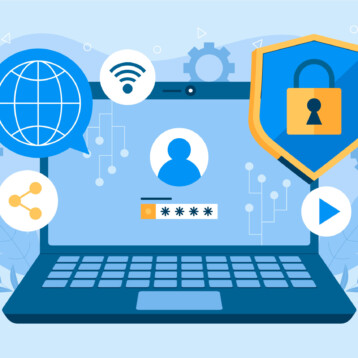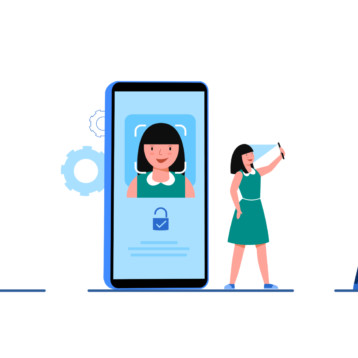
Data security is fast-moving and keeping up can be a challenge. Tablets and smartphones have replaced desktop computers in little more than a decade, and the speed of change is showing no signs of slowing down as technology becomes increasingly ingrained in all aspects of daily life.
With the average person in the UK owning 3.5 internet-enabled devices in late 2017, the number of threats also continues to multiply. From phishing emails to SSL stripping, there are seemingly endless threats and corresponding security solutions, so it can be hard to make sure that you are fully protected. As a result, many people are reactive rather than proactive when it comes to keeping their data safe.
But, with a new year on the horizon, this article will help you to stay ahead of the hackers by looking at which threats are likely to become more common in the next 12 months, and which security measures will be essential to combat them.
IoT awareness
With the popularity of smart appliances and voice assistants continuing to grow, it is thought that the global market for Internet of Things (IoT) devices could reach 18 billion devices by 2022. While IoT is incredibly popular, every additional device on your network could pose a potential risk – especially if it has not been set up correctly.
As useful as they are, the danger with Wi-Fi connected devices like toasters and lightbulbs is that their convenience means they are connected to a network and forgotten about. This risk is that many have factory set default passwords which are unlikely to be updated. Just by using these default passwords, hackers could find a simple backdoor into your network.
Awareness is a simple way to defend against this threat, and strong passwords on all of your network devices will minimize the risk of a breach.
Cloud usage
Cloud storage is a hugely popular solution thanks to its simplicity and convenience. For business and personal users, the ability to access documents from any device around the world for editing and collaboration has become a key element for project work. As cloud solutions continue to become increasingly ubiquitous for document storage, the risk that they will become a larger target for cyber attacks in the next 12 months becomes greater.
While there is a great deal of trust involved, as using a cloud service is putting your data in the care of a third-party, there are still things that users can do to ensure that their cloud-based documents remain secure.
These include keeping a close eye on your account’s access permissions, so information is only seen by those who have express permission and only signing in when connected to a secure network. This means not using public Wi-Fi or other forms of unsecured connection. In these cases, it would be advisable to download documents for offline editing.
Bring home and office together
In recent years, the idea that simply installing antivirus would be enough to keep you protected has become outdated. As cybercrime has increased in its sophistication, security measures have had to react by becoming ever more versatile. As the numbers of people working remotely continue to increase – estimated to almost reach 50% of the global workforce in 2022 – more and more sensitive data is being accessed from outside the traditional office environment.
One of the most user-friendly methods of keeping your data safe online is a virtual private network (VPN). This tool ‘tunnels’ your data through a server, allowing you to browse without being tracked. In addition to this anonymity, you benefit from end-to-end encryption to hide your internet activity from prying eyes – ideal for mobile working.
Effective domestic cybersecurity in 2019 will need to include a range of security tools alongside VPN, such as antivirus, email security scanners, firewalls and DNS protection, bringing personal devices in line with the security requirements of an office.
Education
While most people’s eyes will be on high-profile data breaches and the risks posed by new forms of attack, the real key to data security in 2019 will be to focus on the basics. Human error is still one of the most common reasons for a data breach, and you can only ever be as strong as your weakest link. Even the world’s most sophisticated security software could be undermined by something as simple as a weak password.
With this in mind, the most effective way to protect your data is sticking to the basics of cybersecurity best practice and making sure that everyone who has access to your network is doing the same. It might not be glamorous, simple things like installing updates and patches as soon as they become available are the things that will ensure your data and details remain secure.
Finally, it’s also important to keep yourself informed and stay up to date with the latest developments in security and threats. While it can be time-consuming, taking the time to read up on the topic will help you to know what steps will become necessary to take to keep protected in the next 12 months and beyond. Also, it would be great for anyone to check this article about 3rd party data in digital marketing.










